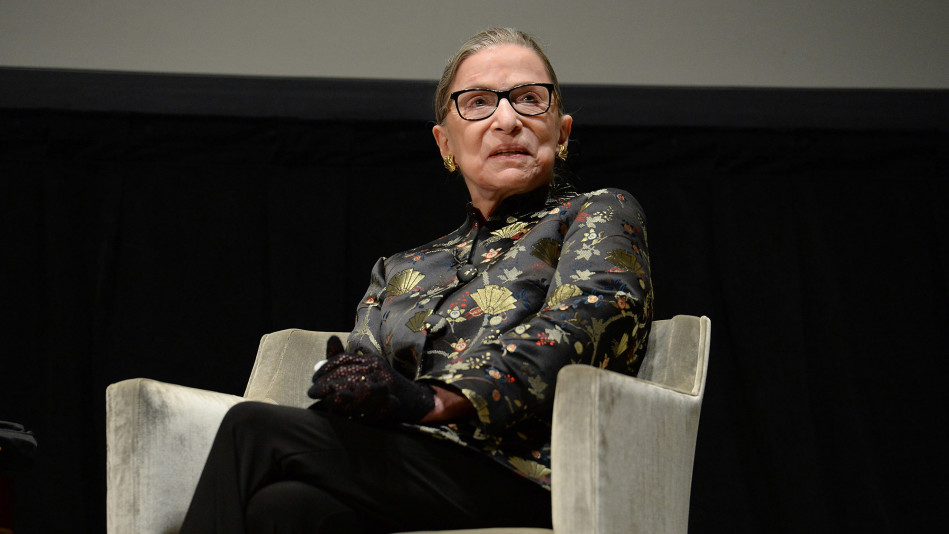The Making of the Ruth Bader Ginsburg Documentary

Photo: Michael Kovac/Getty Images
RGB, a documentary about the trailblazing and tireless U.S. Supreme Court Justice Ruth Bader Ginsburg, co-produced by Storyville Films and CNN Films, was released in May. We spoke with the film's co-directors, Julie Cohen and Betsy West, about capturing RBG's life and legacy.
O Magazine: How did Ruth Bader Ginsburg as a documentary subject first come up?
Julie Cohen: Betsy and I had each previously interviewed Justice Ginsburg for different projects. And around 2013, we saw that she was emerging as this pop culture icon, especially among millennials. But we realized that even though RBG's younger fans were obsessed with her, they didn't really know what she'd done for women's rights. People know about Gloria Steinem's contributions, but Justice Ginsburg's story is not that well-known—even though it's not hidden. By 2015, Betsy and I asked ourselves, Shouldn't someone be doing a documentary about her? Why shouldn't it be us?
O: But how do you go from the initial idea to actually interviewing Justice Ginsburg in her chambers?
Betsy West: We weren't going to do the film without Justice Ginsburg's participation, so the first step was to craft an email proposing the idea, which we worked on for weeks. Can you imagine if we'd made any spelling errors? Eventually we sent it off—and quickly got a response from her, which in effect said, "Not yet." That was disappointing, but "Not yet" is not the same as "No." A few months later, we sent another email, which listed some of Justice Ginsburg's friends, family and past and present colleagues we wanted to interview. We suggested speaking to them first and then her. Again, a quick response. But this time she said, "I wouldn't be ready to do an interview for two years. But you could start by talking to this person, that person and my official biographers." At that moment, we thought, She's in.
JC: So we started doing some of those interviews. But not too long after, Justice Ginsburg's assistant sent us a list of 10 or 12 events that the Justice would be attending over the next year, like her speaking role with the Washington National Opera. Included with the list was a note: "The Justice thought these might be interesting things for you to film." She was clearly dedicated to making sure we got material we needed.
O: Watching RBG pump iron is amazing. How did you broach the topic of filming her workout?
BW: Very carefully! It obviously wasn't the first request out of our mouths. During one meeting, Julie and I showed her a short excerpt of something we'd put together. It was about two minutes of home videos that documented the beginning of her love story with her husband, Marty Ginsburg. I'm not sure she even knew those movies existed. But we could tell she was moved, so we asked if we could film her both in her chambers, at home and at the gym.
JC: Honestly, for the purposes of the movie, we didn't need to be in the gym. It's a small, mirrored space. But we just couldn't miss the experience. Until seeing it firsthand, I didn't believe she did 20 push-ups a day; I thought it was legend. But she has an unbelievable amount of determination—and energy. On the road, we filmed her attending an opera and she was ready to party afterwards. Well, party might be a stretch. She was game for a fancy dinner!
BW: We shouldn't have been surprised, because she's a woman of her word. If she agrees to work with you on a documentary, she's going to make herself as available as possible. But she also put her trust in us: She never once asked to see the film. In fact, she didn't see it until it premiered at the Sundance Film Festival.
O: Was that exhilarating—or utterly terrifying?
JC: As far as we were concerned, she was the only person in the room. Luckily, Betsy and I had a perfect view of her. We spent the entire time watching Justice Ginsburg watch the film. She laughed, she cried—three times, we counted!—and she even asked for a tissue.
O: Do you hope audiences react similarly?
JC: I'm just excited for viewers to learn about her early story, before she was the Notorious RBG. A lot of the discrimination she experienced, both personally as a female lawyer and just as a women living in the 1960s and '70s, would have been too much for most people. But Justice Ginsburg chose to fight back with a deep, unassuming toughness. And look how far she got on that! She changed the law of the land to make the Constitution apply fairly to women as well as men. That's a lesson we can all learn.



